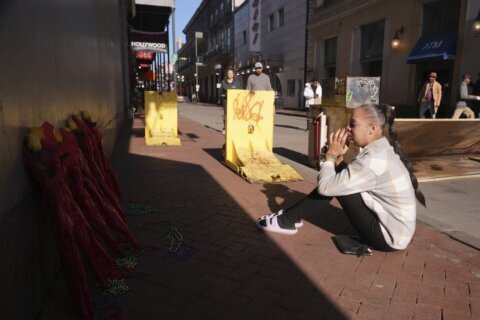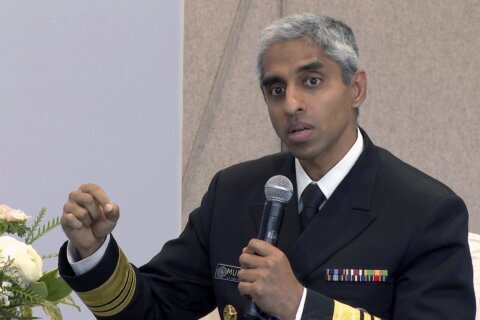Major archaeological finds around the world continue to make headlines. Among recent discoveries are a 4,500-year-old canoe in Lake Mendota, Wisconsin; eighth-century settlement remains in Uzbekistan; gardens and roads in Ecuador’s Amazon rainforest that are at least 2,000 years old; and human bones in Laos that suggest people were active there 86,000 years ago.
And then there’s Jerash, a Neolithic megasite in Jordan north of Amman, the capital. Archaeologist Maysoon Al Nahar, a professor and former dean of the school of archaeology and tourism at the University of Jordan, is leading excavation there, where human remains have been found dating back to 8,500 B.C. at a site called Tell Abu Suwwan. Greek, Roman and other cultures thrived there until earthquakes, beginning in the eighth century, left the city in ruins. Some of the Greco-Roman temples and other structures have been partially restored in Jerash, which is often referred to as the Pompeii of the Middle East.
Al Nahar, who also is editor-in-chief of the “Jordan Journal for History & Archaeology,” earned a master’s degree in archaeology at Yarmouk University in Jordan and a Ph.D. in anthropology at Arizona State University. She has worked at 45 archaeological sites and leads dozens of students and other workers in the ongoing Jerash excavation. Here’s what she has to say to students and future archaeologists about the field and profession. The interview has been edited for length and clarity.
Q: What’s the latest on archaeological work you’re leading at the site in Jerash?
I am excavating a Neolithic site at Jerash, Tell Abu Suwwan. It’s funded by the University of Jordan. It’s part of a field school that we are doing there. Tell Abu Suwwan is dated from about 9,000 B.C. until 4,000 B.C. The site was continuously occupied during that period. We found their huge architecture for a big building that was modified several times through the Neolithic period. It’s called grill building type. This is an archaeological term. It’s similar to the Neolithic architecture of Anatolia. It’s the only site in our region that’s similar to the Anatolian sites. Also, we found at the site very important things such as a human cemetery, which was built by mud brick there next to the grill building. It included two complete burials of skeletons, some secondary burials and nine skulls. Two skulls have plaster on them. This is a practice that used to be done during the Neolithic periods. They used to take out the skulls a while after burying the dead and remake the face on the skull with plaster. So it was found like that in Jericho and many other Neolithic sites. But usually in all the others sites, they used to put shells in place of the eyes. At Tell Abu Suwwan, they put obsidian in one of the skull’s eyes, instead of the shells. This is new, something I haven’t published in scientific papers yet. I’m thinking in the future to do some DNA testing for these human skeletons and skulls. We cast all the human remains and we have done CT scanning for them, and they all have the needed DNA bones.
Q: What’s the historical significance of recent discoveries at the site?
The Neolithic period is the period of establishing the first permanent villages in the world and the beginning of systematic agriculture. Tell Abu Suwwan represented this type of village. During this period, humans depended on both hunting and agriculture in their economy. This period is important to human history because humans settled and domesticated animals and plants. In our region, they have very beautiful architecture with very good foundations. They used plaster on the floors and walls and they colored them with red paint. This is something you don’t find everywhere. At the end of the Neolithic period, they started making pottery for the first time.
[How to Become an Archaeologist]
Q: What does participation in the excavation mean for the 40 to 50 college students who have been involved?
The archaeology students are obligated to participate in this excavation as part of their curriculum. We teach them the techniques of archaeology, how to excavate and use the trowel, how to do documentation and how to read the stratigraphy of the archaeological sites, especially for the prehistoric sites. They have to learn how to be very careful while excavating. It’s also important for them to start observing cultural material. Before signing up for field school, students learn and read a lot about these periods, but when they go to the excavation, their professional experience starts. In their first excavation, they begin their experience uncovering and touching real things from the past. So for them, this makes them more connected to archaeology and better understand what they studied and read before. They learn how to connect the clues and the information they gathered during the excavation and understand human behavior during these periods. For example, connecting the climate with the architecture with humans who lived in the area and what they were doing. All this information you have to take into consideration while you are working on any site. When I asked one of my students what he learned from this excavation, he told me, “We read about these periods, but we didn’t know how important they were until we started discovering things and touching these important items and artifacts and finding this ourselves at the site.” So, they are more engaged with archaeology. The other thing that we’re teaching them is how to be very honest with what they work on. They have to write everything they find, document it very well, even if they don’t like the results that they found. It’s something very scientific they have to do. Also, having them all together in this big area teaches them how to work as a team because we distribute them in archaeological units. Four students work together in each unit so that they learn to cooperate and work together to submit everything together. Also, working in the archaeological site is not easy physically, so they have to help each other. They have to learn how to work for a long time under the sun, and we teach them how to protect themselves from the sun.
Q: What personal qualities would benefit someone interested in studying archaeology and becoming an archaeologist?
To be a good archaeologist, first you have to be passionate about archaeology. You must like what you do, because it’s very hard work. So if you don’t like it, you will never succeed in it. You have to be very patient, too. Also, archaeologists must be very good observers because if you don’t look accurately at things and see them well, you will never be able to interpret them. And you have to be highly moral and very strict toward the ethics of archaeology, because sometimes you are the only one who sees things when you’re working. And if you aren’t very honest and don’t (document) it as it is exactly, nobody will know. Another thing I also see in a good archaeologist is to be a good leader with a strong personality, because one day he or she will manage an archeological project and should have social intelligence to deal with different types of people and be able to control the work of many people at the site.
[IMAGE]
Q: How is archaeology closely related to other academic and professional fields?
Actually, in the United States, archaeology is considered part of anthropology. So the big umbrella is anthropology, and archaeology is part of it. For example, I am, as a U.S. graduate, an anthropologist specialized in archaeology and prehistory. In archaeology, we are dealing with human life. We have to interpret everything, human behavior, through the clues that we find at the archaeological sites. This is the main goal of any archaeologist — to understand and interpret the human behavior at the archaeological site. For example, if I find a large stone, it’s not important by itself. What’s important is why this stone is there, who put it there, why did they choose to put it there? What are the factors that affected human decisions? So, my questions are about the humans who have put the stone there. That’s the main reason we are doing archaeology — to understand human behavior in the prehistory and historical periods. This is why it’s part of anthropology. When we open an archaeological site, we are looking into a whole society that left things there. We are trying to find clues to their daily life and investigate their socioeconomical strategies and general way of life. Therefore, there are many other fields that we collaborate with. For example, for carbon dating, we need natural sciences for such work as sending our samples to the labs so they can give us the dates. There are many types of dating that can be done in these labs. Also, we take samples from the dirt at the site so we can understand what type of plants were there during the life of the site. Also, zoology is important for analyzing animal bones that were collected from the site and can tell us what types of animals were there. So, we learn what the people used to eat through periods, what they used to hunt and domesticate. Also, there is another discipline called geoarchaeology. It’s very important because it tells us about the geology at the site and how humans at the site used to get benefits from the area around them — if the geology was the same, if the topography was the same or changed through time. All of this is very important so we can complete the picture. There is hydrology, climatology, environmental — they are all connected and help us understand the factors that affected the human life through time. We also need architects to help us document and understand the discovered building and structures. Since we are dealing with human life, we need to investigate every aspect of it through every discipline related to it.
[Double Majors in College: What to Know]
Q: What’s a common misconception the public has about archaeology?
There are many things. Unfortunately, many people dehumanize archaeological sites. When people go and visit archaeological sites, they think about the stones that they see. But they don’t think a lot about the people who made these things or lived there. I call it dehumanization of the site. People now think that they are much smarter than the people who lived in the past. So when they see something like a big building, they say, “How did they do that? How did they build that?” As if it was impossible. But that was not impossible at their time. Why do you think it was impossible for them? These people built cities and had empires. At Petra, for example, because of the way the buildings are carved in the mountains, many people think that they were giants who did the work. This is one of the things many people ask me about. I tell them no, there are no giants through time. What has been accomplished during these periods was their daily life work. Also, when you say Stone Age, maybe this name makes people think about stones only. They think that these people traveled from one place to another randomly, without planning. But archeological studies proved that prehistoric people had mobility and settlement strategies. It was not random. They were smart and very good observers of their nature, and they knew the seasons for everything, and they traveled accordingly. Even the stone tools that they made were very well done. Nowadays, I teach a lithic class at the university and teach the students the technique of making stone tools. Very few of them succeed in making a well-made stone tool by the end of the semester, which indicates that the prehistoric people were well skilled in making stone tools. Another problem we face is because of the unawareness about archeology, many people, when you say archaeology, immediately think about gold. This is why there’s a lot of looting at the archaeological sites. This is one of the problems — the fantasy of the movies also affects archaeological sites, such as “Indiana Jones” and other Hollywood movies.
Q: What does the study and practice of archaeology look like going into the future?
I think they will use more technological instruments. We use different types of software and computer programs for analyzing archeological data. For example, we use GIS — Geographic Information System. Also, we use AutoCAD for making architectural drawings and other advanced programs. We have many new instruments now in archaeology that we use at the site. Maybe in the future there will be even more advanced ones. But in my opinion, no matter how advanced equipment in archaeology is used, it’s not like the human hand. When we work at the archaeological sites, we feel the dirt, we feel where things are, we smell things while we are working that get us to do more excavation or stop. Collecting data should be done by humans always. Hopefully, in the future there will be more preservation and protection of the archaeological and heritage sites. I hope governments and stakeholders work toward protecting these sites and conserve them not just for the money value or tourism, but also for the coming generations to learn about the past and roots.
More from U.S. News
5 College Majors With Great Job Prospects
Pros and Cons of Applying to College as an Undecided Major
Q&A: An Archaeologist’s Insights for Archaeology Students originally appeared on usnews.com







